Chondromalacia Patella
Read More >
Chondromalacia patella is a condition of pain at the front of the knee. It causes a softening and degeneration of the cartilage at the back of the kneecap. The condition can start with inflammation of the cartilage and progress to complete wear of the cartilage to expose the bone below.
Without intervention, it can cause extreme pain and significantly limit activity levels and impact quality of life.
Treatment is often directed by a physical therapist, who is able to identify if there are biomechanical factors that can be improved to reduce the stress on the patella. Common factors are glutes or quadriceps weakness, so often physio exercises will focus and strengthening these areas amongst others.
Rehabilitation exercises can be extremely effective to manage symptoms and prevent the progression of this condition. A physical therapist will provide specific physical therapy exercises for you.
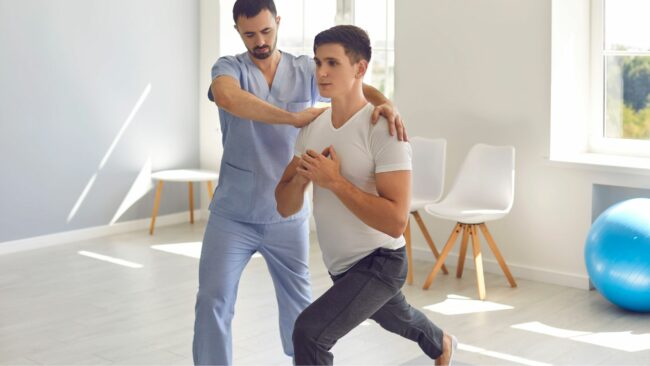
Most commonly strength is deficient in the quadriceps and gluteal muscles. An assessment with a physical therapist will provide information for what is the specific strengthening that you need. Additionally the hamstring muscles at the back of the thigh can also benefit from strengthening.
The following exercises can be completed as 3 sets of 15, on alternate days, about 3 times per week.
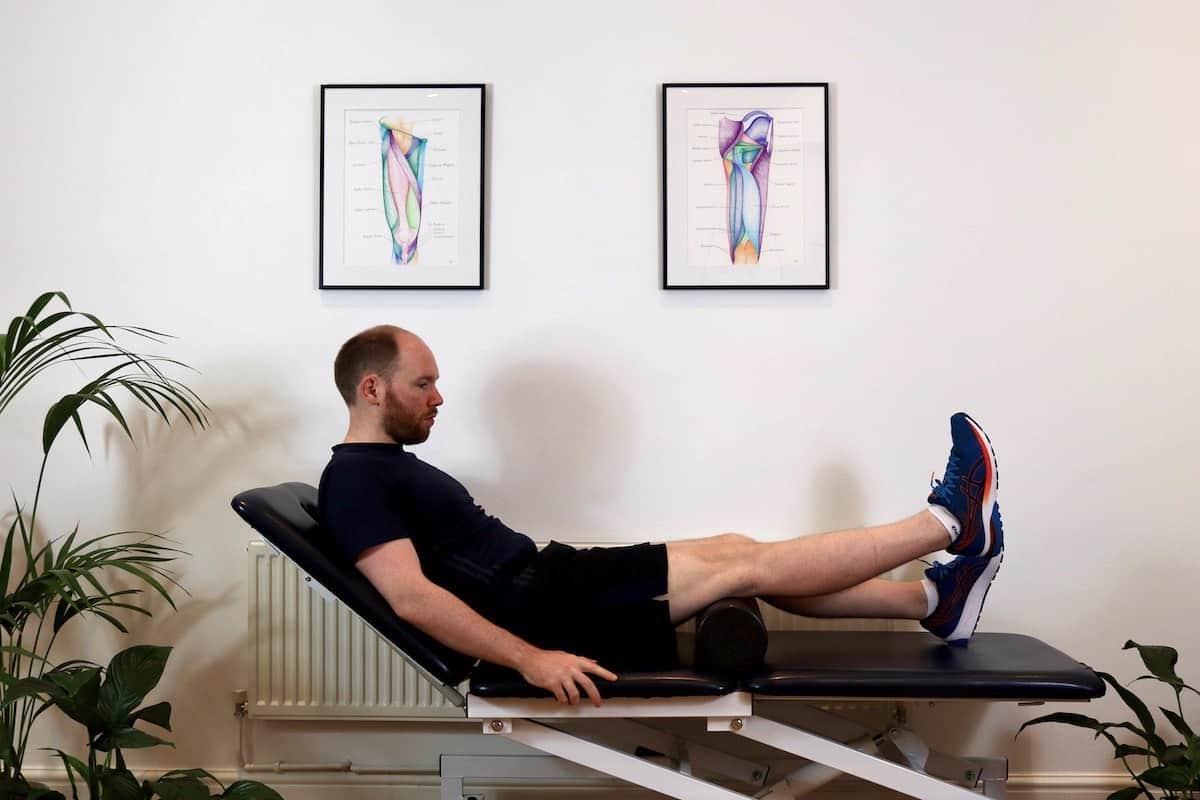
Sit with your knee resting on a foam roller or thick pillow. Push your knee down into the roller or pillow and straighten your knee, lifting your ankle off the floor. Hold this position for 5 seconds, relax, and repeat.
You should feel your quadriceps working.
Lying on your side with a resistance band around your ankles. Keep your bottom leg slightly bent, to help with stability, and your top leg straight. Lift your leg up and backwards into the resistance band.
You should feel your glutes working.
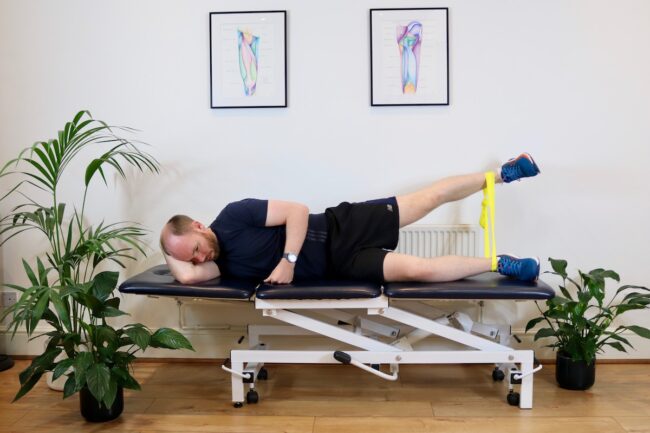
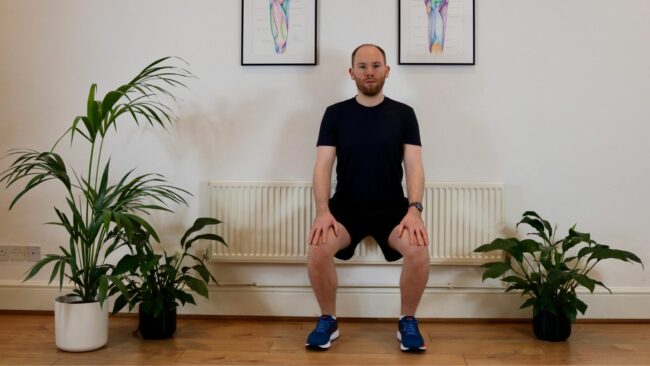
Stand a little in front of a wall. Sit with your back flat against the wall. You want to have your knees above your ankles and bent to 30-60º. The greater the knee bend the harder it will be.
You should feel your quadriceps working.
Stand holding a weight, with your feet hip-width apart and knees slightly bent. Bow forwards with a straight back, bending from your hips. Lower till you feel tightness in your hamstrings, then squeeze your glutes and push your pelvis forward to return to standing.
You should feel your hamstrings and glutes working.
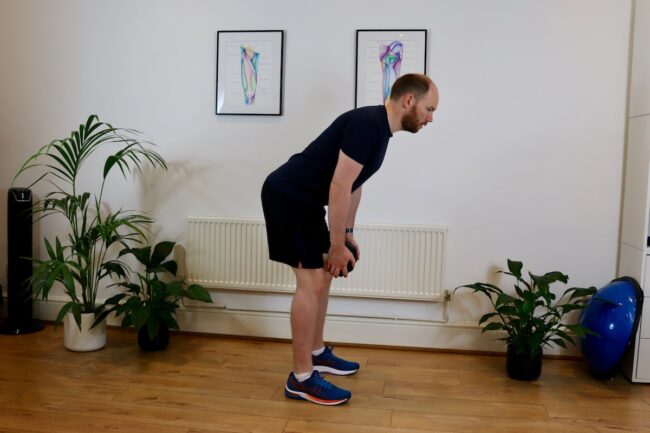
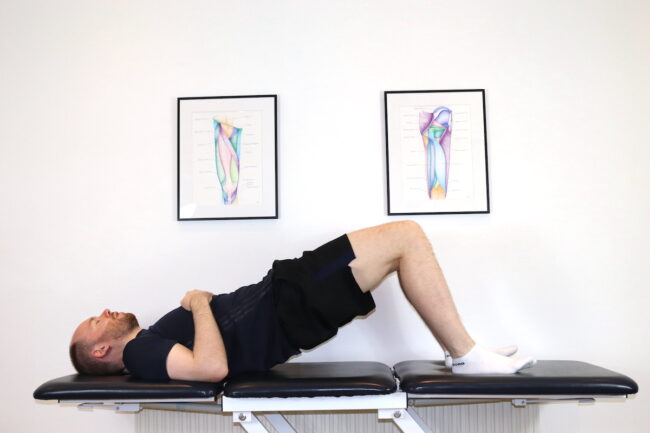
Lying on your back with your heels, hip-width apart and your knees bent to 90º. Tilt your pelvis backwards, to flatten your back against the floor and continue to curl and lift your pelvis off the floor.
You should feel your glutes and hamstring working.
Stretching tight muscles such as the quadriceps can help to offload the patellofemoral joint, help patella tracking and improve pain associated with chondromalacia patella.
These stretches should be held for 45seconds each and repeated frequently throughout the day, at least 3 times.
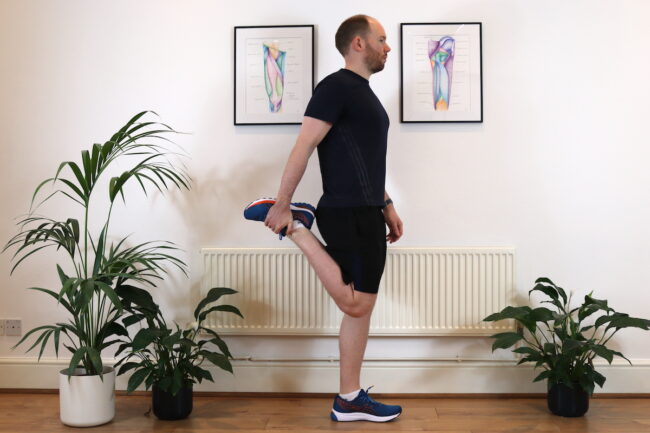
Standing straight, on one leg, bend your knee and take hold of your ankle. Ensure your knees are parallel and your hips are pushed forwards and that there is no bend at your waist. Pull your ankle closer to your buttocks to feel a stretch across the front of your thigh and hip.
Step forwards with one leg and bend from your hips keeping a straight back. Have your hands on the leg that is stepped forwards to keep your knee straight, and bend further from your hips to feel a stretch at the back of your thigh. Keep you foot flat on the floor throughout.


Stand with your feel off the edge of a step. Hold onto a wall for balance. Lower your heels down off the step while keeping your knees straight, to fee the stretch at the back of your lower leg.
Sit on a chair with your foot rested on the floor and knee straight. Put your hand over the bottom of your thigh with your thumb on the inside of your kneecap and index finger on the outside. With support from your other hand push your kneecap laterally (towards the outside). Gently release the kneecap back to its central position and repeat.
You can do this for 20-30 repeats, provided it is pain free, and repeat this several times per day. Sometimes it can relieve pain if you are feeling it with activity.
This article is written by James McCormack, a Lower Limb Specialist who is an expert in treating Knee pain.
This is not medical advice. We recommend a consultation with a medical professional such as James McCormack if you are experiencing any of the symptoms discussed in this article. James offers Online Physiotherapy Appointments weekly and face-to-face appointments in his London clinic.